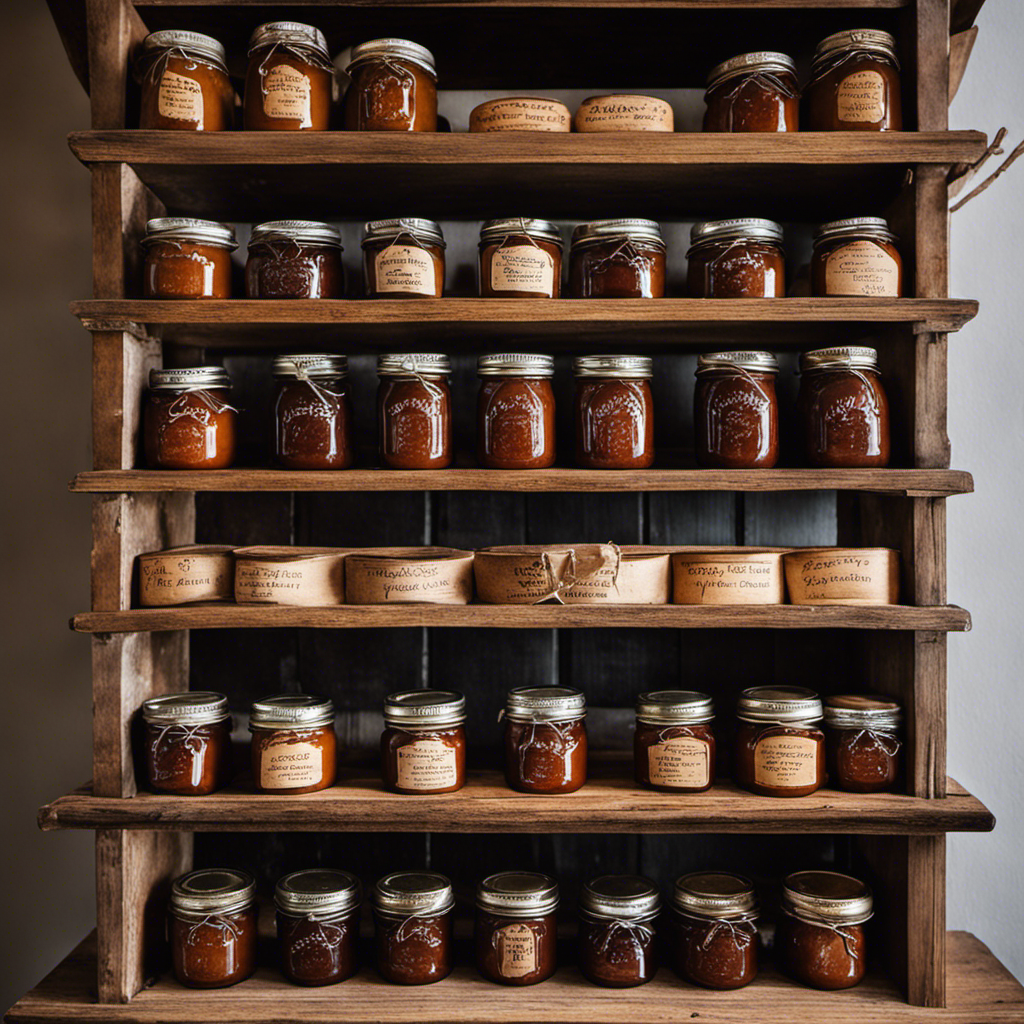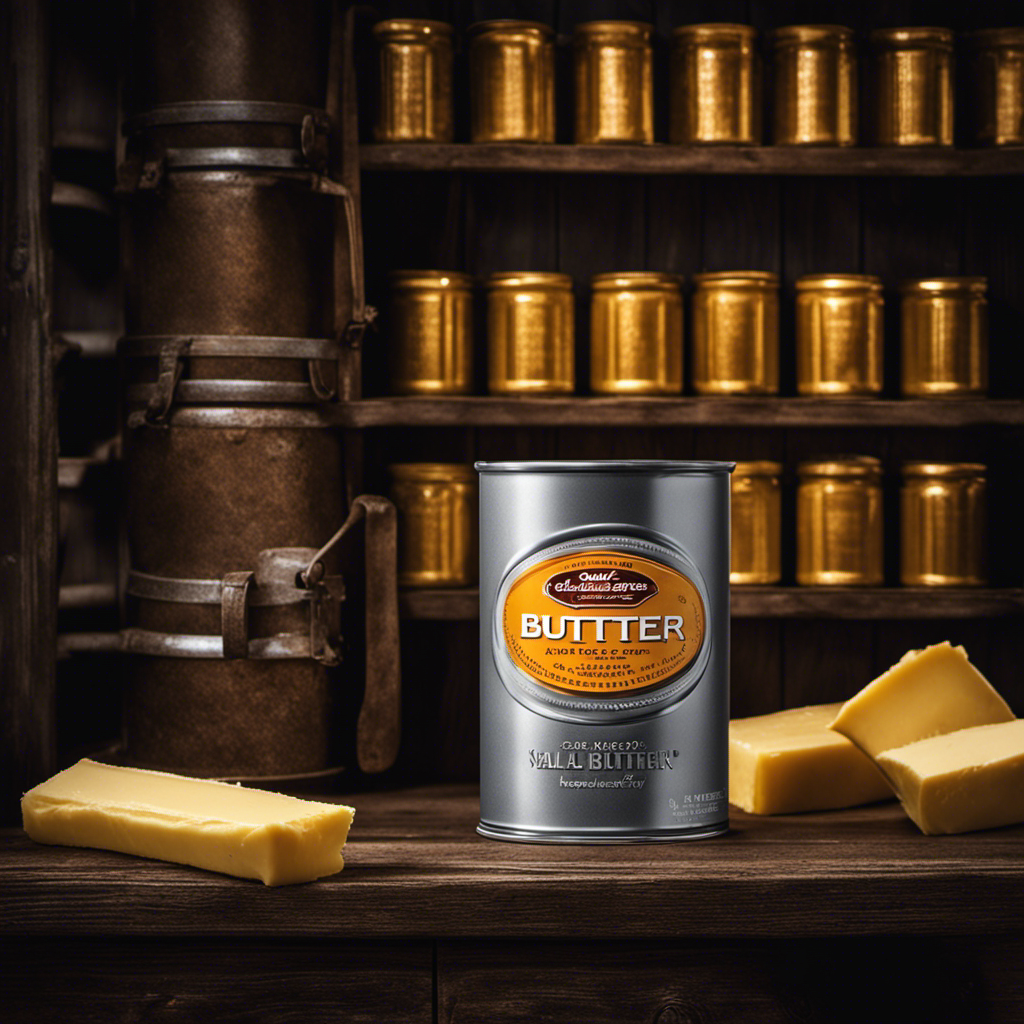Re-freezing thawed butter can negatively impact its texture, making it crumbly and grainy, and dull its flavor due to oxidation. It also increases the risk of bacterial growth if not handled properly. To maintain safety and quality, only re-freeze if it’s been kept cold and hasn’t sat out too long. To discover how to best handle butter and avoid these issues, keep exploring the details below.
Key Takeaways
- Re-freezing butter can cause a crumbly, grainy texture and dull its natural flavor due to oxidation.
- Multiple freeze-thaw cycles increase the risk of bacterial growth, especially if not kept below 40°F/4°C.
- Proper packaging and gradual thawing in the refrigerator help preserve quality and reduce safety risks.
- Signs of spoilage, like mold, rancidity, or off smells, indicate butter should not be re-frozen.
- For safety, re-freeze only if butter has been stored properly and not left at room temperature for over 2 hours.
How Re‑Freezing Affects Butter’s Texture and Flavor
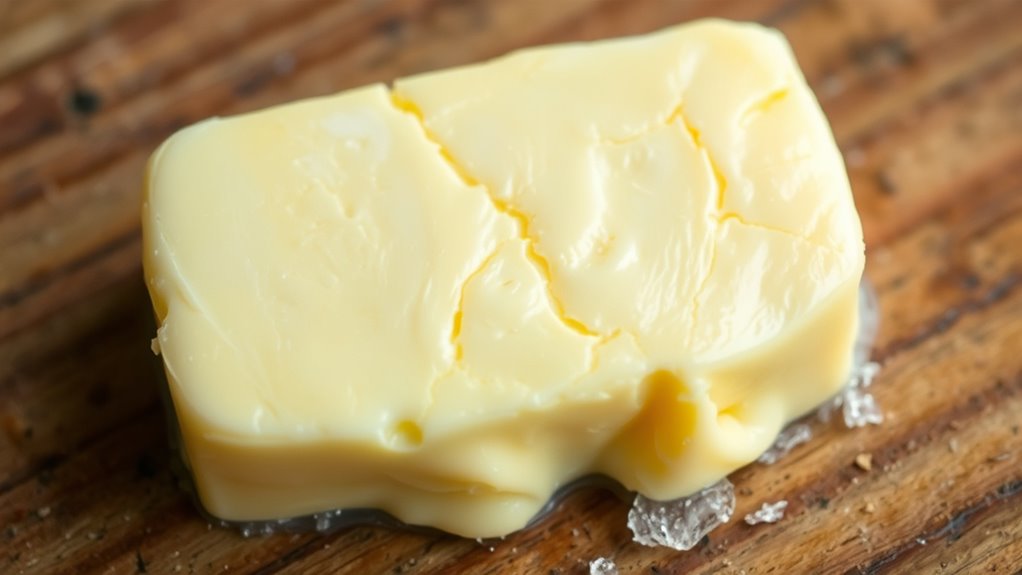
Re-freezing thawed butter can change its texture and flavor, often making it less smooth and more crumbly. This process impacts butter’s butter granularity, causing it to become grainier and less creamy. As water separates during the initial thawing, re-freezing exacerbates this effect, resulting in a drier, more crumbly consistency. Additionally, flavor deterioration occurs because exposure to air and temperature fluctuations accelerates oxidation, dulling butter’s fresh taste. The butter’s natural richness diminishes, and you might notice a slightly off or stale flavor after multiple freeze-thaw cycles. Overall, re-freezing alters the butter’s smoothness and flavor profile, reducing its quality and making it less ideal for spreading or baking without further processing. Moreover, repeated freezing can negatively impact the contrast ratio of the butter’s texture, further compromising its quality.
Safety Considerations When Re‑Freezing Butter

While re-freezing thawed butter can affect its texture and flavor, it’s also important to contemplate safety. Re-freezing increases the risk of cross contamination if the butter was exposed to bacteria during thawing. If butter sits at room temperature too long, bacteria can multiply, raising bacterial growth potential. When you refreeze it, any bacteria present can survive and become active again once thawed. To minimize risks, only re-freeze butter if it has been kept at safe temperatures (below 40°F/4°C) and hasn’t been left out for more than a couple of hours. Always ensure your storage containers are clean, and avoid re-freezing butter multiple times. Proper handling and prompt freezing after thawing help reduce cross contamination risks and bacterial growth potential, ensuring safety. Additionally, understanding the temperature control during storage can significantly impact the safety and quality of your butter.
Best Practices for Freezing and Thawing Butter

To guarantee butter stays fresh and safe to use, it’s essential to follow proper freezing and thawing techniques. First, choose appropriate butter packaging—airtight foil or vacuum-sealed bags prevent moisture and air exposure. Second, use sturdy storage containers or resealable bags to protect against freezer burn and odors. Third, divide large quantities into smaller portions to make thawing more manageable and reduce repeated freeze-thaw cycles. Fourth, label packages with dates to track freshness and ensure timely use. When thawing, do so gradually in the refrigerator, avoiding quick methods like microwave heating. Proper packaging and storage container selection, combined with controlled thawing, help preserve butter’s quality while minimizing safety risks. Additionally, selecting the right self-watering plant pots can help maintain healthy plants, which is essential for an organized and efficient kitchen or pantry space.
Indicators of Butter That Should Not Be Re‑Frozen
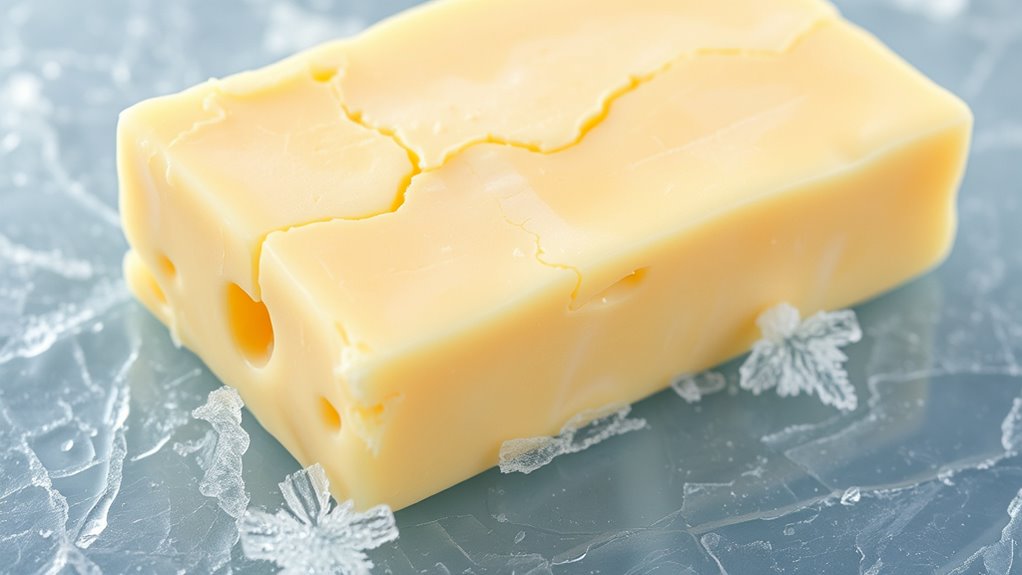
Knowing when not to refreeze butter can save you from potential health risks and compromised quality. If you notice mold growth on the surface or inside the packaging, it’s a clear sign you shouldn’t refreeze or consume the butter. Mold indicates bacterial or fungal contamination, which can pose health hazards. Additionally, if the butter develops an off smell or tastes rancid, it’s likely undergone rancidity development, signaling spoilage. Rancid butter not only tastes unpleasant but can also be harmful if ingested regularly. When butter shows these indicators—mold, sour odors, or a greasy, discolored appearance—discard it instead of refreezing. Refreezing spoiled butter can lead to further microbial growth, increasing health risks and further diminishing quality. Always trust your senses and err on the side of caution.
Alternatives to Re‑Freezing Thawed Butter
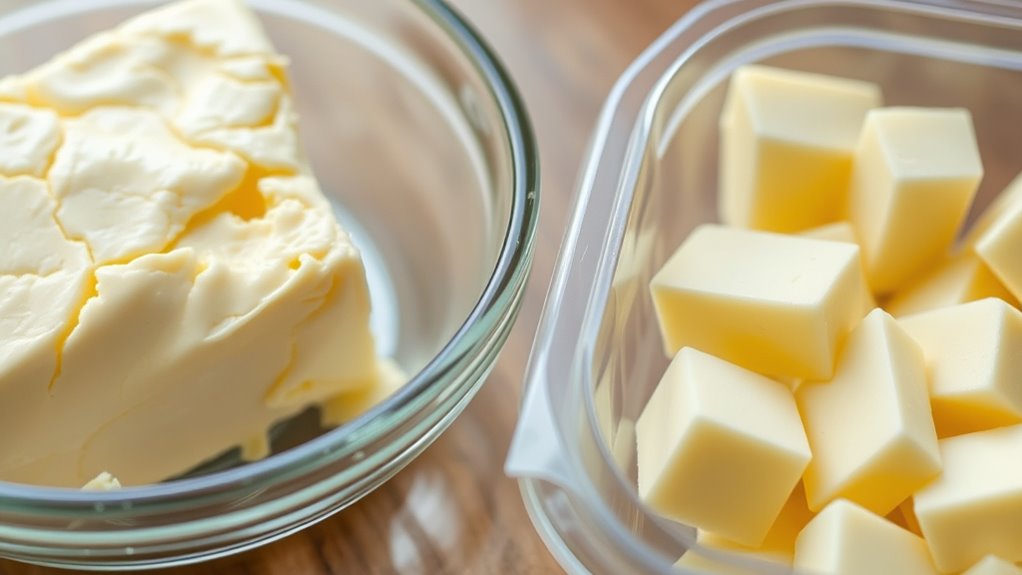
If you decide not to refreeze thawed butter, there are effective alternatives to preserve its quality and usability. Using butter alternatives or frozen butter substitutes can extend its shelf life and maintain flavor. Consider these options:
If not refreezing, store in the fridge, use quickly, or freeze in small portions to preserve quality.
- Store it in an airtight container in the refrigerator for up to a week, preventing spoilage.
- Use the thawed butter within a few days in cooking or baking, where texture loss is less noticeable.
- Incorporate it into cooked dishes or spreads promptly, minimizing waste.
- Freeze small portions in ice cube trays for quick, controlled use later, reducing the need for refreezing. These methods help maintain butter quality without risking safety concerns. Whether you choose butter alternatives or frozen butter substitutes, proper storage guarantees you get the most out of your product. Proper storage practices are essential to maintaining food quality and safety.
Frequently Asked Questions
How Many Times Can Butter Be Safely Re-Frozen?
You might wonder how many times you can safely re-freeze butter. Typically, it’s best to re-freeze butter once or twice, as repeated freezing can affect its texture, making it grainy or crumbly. Keep in mind that prolonged freezing duration also impacts quality. Each time you re-freeze, you risk compromising the butter’s texture and flavor, so only re-freeze if absolutely necessary and try to use it within a reasonable timeframe.
Does Re-Freezing Butter Affect Its Nutritional Value?
Think of re-freezing butter as a delicate dance on ice; it may stumble, but it doesn’t necessarily fall apart. Re-freezing can cause some nutritional degradation, subtly diminishing vitamins and nutrients. While flavor alteration might be noticeable, especially if the butter develops a freezer taste, your body’s essential fats and nutrients largely remain. So, although it’s not ideal, re-freezing butter doesn’t drastically rob it of its nutritional value.
Can Re-Frozen Butter Be Used for Baking?
Yes, you can use re-frozen butter for baking, but be aware that its butter flavor might diminish slightly. Re-freezing causes texture changes, making the butter less firm and sometimes a bit crumbly. These changes can impact how it interacts in recipes, potentially altering the final product’s texture. Still, for most baked goods, re-frozen butter works fine, just expect some minor differences in texture and flavor.
What Is the Best Way to Store Re-Frozen Butter Long-Term?
Perfectly preserving your butter’s best qualities begins with proper storage techniques. To store re-frozen butter long-term, you should tightly wrap it, then place it in an airtight container. Freeze it for the shortest duration possible, ideally a few months, to maintain freshness. Label the package with dates, so you track freezing duration. This way, you maximize flavor and minimize freezer burn, ensuring your butter stays tasty and safe to use.
How Does Re-Freezing Impact Butter’S Melting Point?
Re-freezing butter can slightly change its melting point and butter consistency. When you re-freeze butter, ice crystals form and disrupt its structure, which may cause it to melt more quickly or unevenly once warmed. These changes don’t drastically alter the melting point, but you might notice a softer or more crumbly texture. Overall, re-freezing affects butter’s consistency more than its melting point, so use it accordingly for best results.
Conclusion
Re‑freezing thawed butter is like walking a tightrope between convenience and quality. While it might save leftovers, it can compromise texture and flavor, and safety risks lurk if you’re not careful. To keep your butter tasting its best, follow best practices and watch for signs it shouldn’t be re-frozen. Think of it as a delicate dance—when done right, you’ll enjoy fresh, delicious butter every time, without risking a culinary slip-up.



